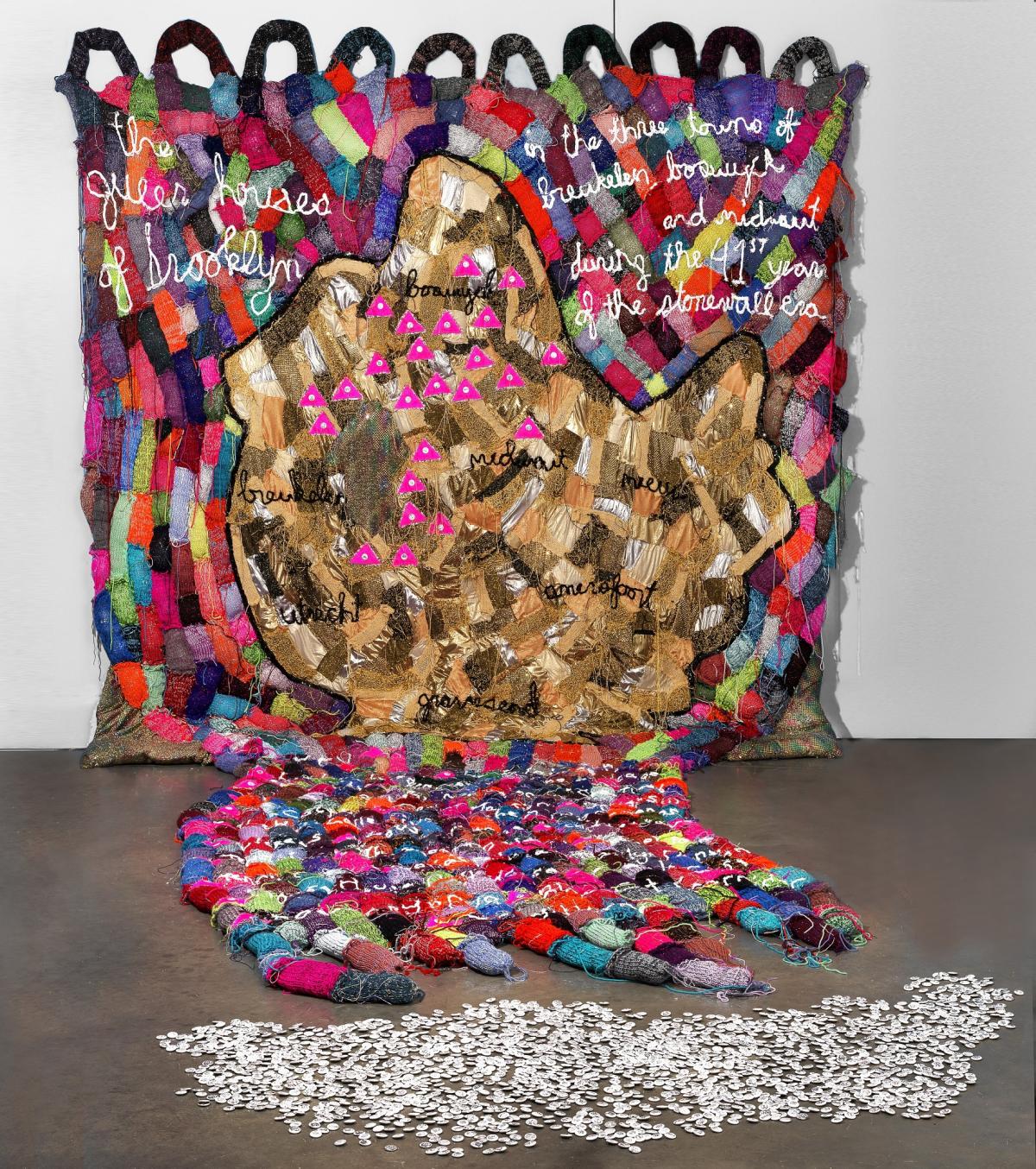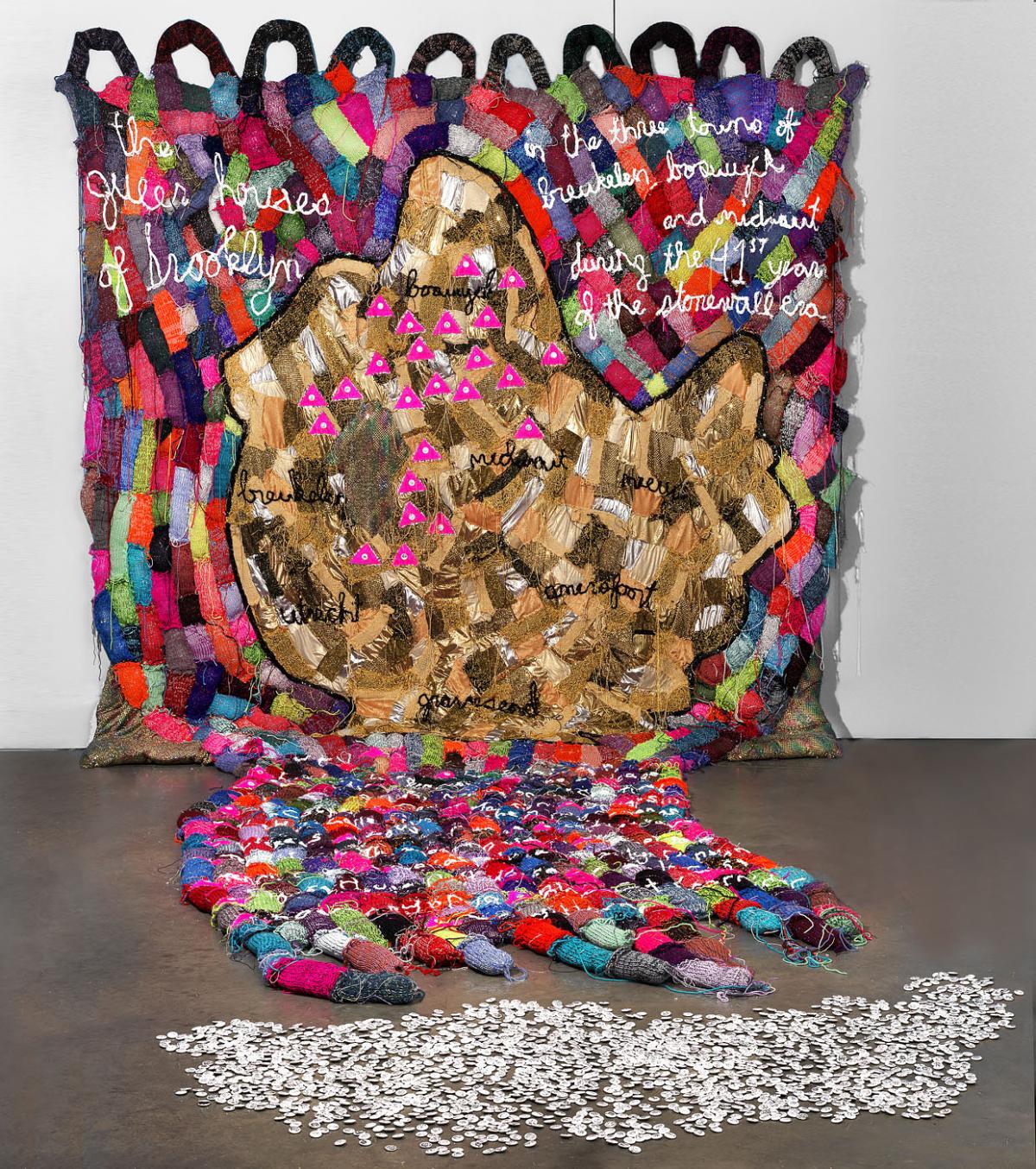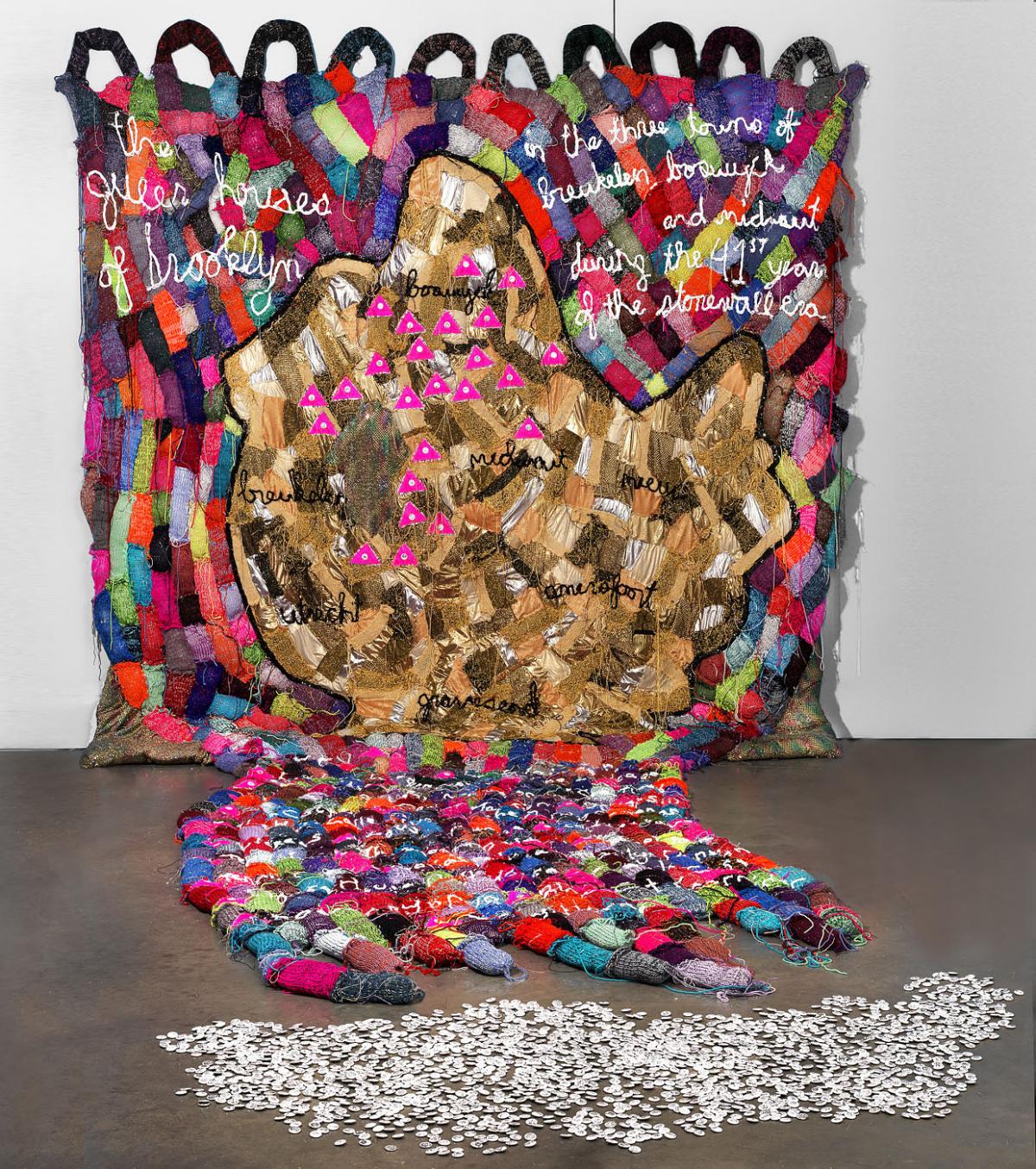In The Queer Houses of Brooklyn in the Three Towns of Breukelen, Boswyck, and Midwout in the 41st Year of the Stonewall Era, L.J. Roberts presents a knitted and sewn map of queer community building in Brooklyn, New York. The map, based on a drawing by Rosza Daniel Lang/Levitsky, was made in honor of Brooklyn’s 2010 Queer House Field Day, a day of playful competitions and costumes among the queer houses. These collective homes were created by queer people to create safe living spaces, form chosen families, and lay foundations for political activism.
Roberts’s large-scale work is a vibrantly colored collage of knitted rectangular poufs, reminiscent of both handmade patchwork quilts and the brickwork of Brooklyn row houses. Inspired in part by the legacy of AIDS quilts, the wall map celebrates the strength of the community. Hot pink triangles mark the homes with open doors. Originally used by the Nazis as an identification badge to mark gay and lesbian people for persecution and incarceration during World War II, the symbol was later reclaimed by AIDS activists for LGBTQ+ self-identity. Queer Houses continues the work of radical community organizing that changes the home, not the inhabitants.
Through their artwork, Roberts, who learned to stitch from their grandmother as a child, uses assumptions about knitting as feminine and amateur art to challenge the very notion of essentialized gender. The haphazard workmanship—emphasized by the loose threads—shows the processes of making and becoming, a queer tactic that resists easy definitions about both art and identity. In this way, Roberts has reconfigured knitting into a powerful statement of defiance, resilience, and community.
Watch a video created by L.J. Roberts for the exhibition 40 under 40: Craft Futures and learn more about their process in creating The Queer Houses of Brooklyn.
This Present Moment: Crafting a Better World marks the 50th anniversary of SAAM’s Renwick Gallery by celebrating the dynamic landscape of American craft. The exhibition explores how artists—including Black, Latinx, Asian American, LGBTQ+, Indigenous, and women artists—have crafted spaces for daydreaming, stories of persistence, models of resilience, and methods of activism that resonate today. In order to craft a better world, it must first be imagined. This story is part of a series that takes a closer look at selected artists and artworks with material drawn from exhibition texts, the catalogue, and artists' reflections.





















